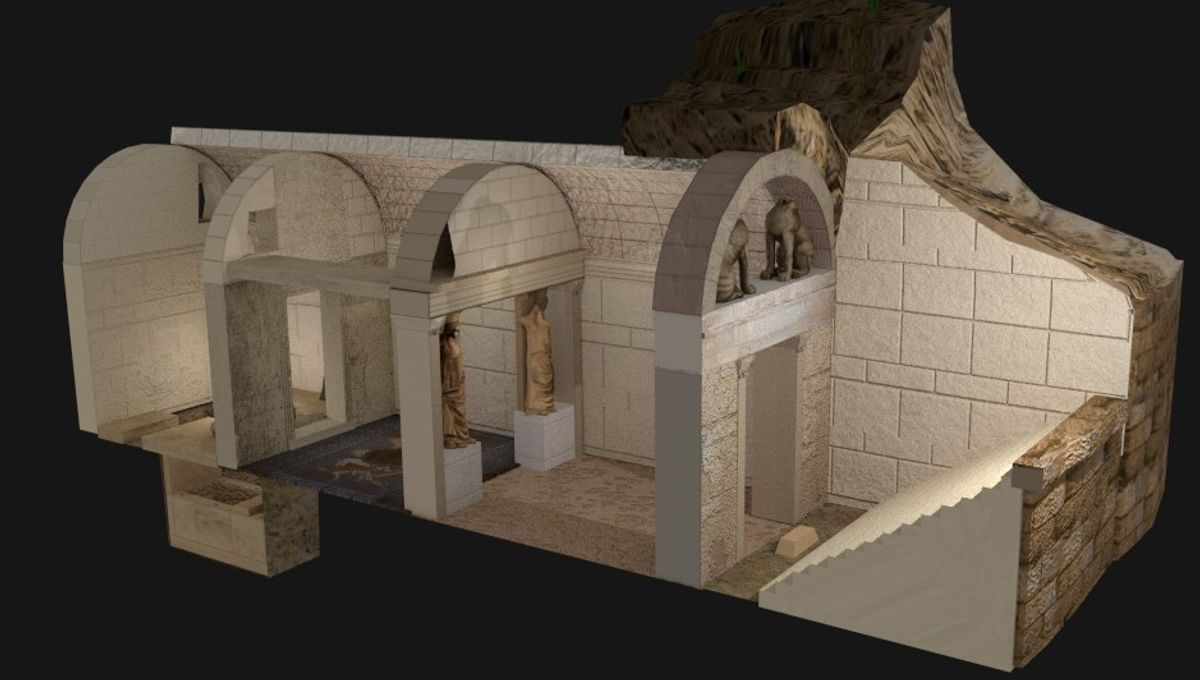
The largest and most lavish tomb ever built in ancient Macedonia may have been designed to fill with sunlight on the winter solstice, according to a somewhat controversial new study. Believed to have been built for Alexander the Great’s dearest friend Hephaestion, the so-called Kasta monument remains the subject of much debate among historians, yet this research suggests that the structure might have been designed to highlight the divine status of its occupant.
Located near the ancient city of Amphipolis in northern Greece, the Kasta tomb was discovered in 2012 and later yielded the remains of five people. Exactly who the monument was built for is still unclear, although inscriptions at the site suggest that Hephaestion was probably the intended inhabitant.
After creating a 3D model of the tomb, study author Demetrius Savvides used a computer program to simulate the movement of the Sun and stars at the time of Hephaestion’s death in 324 BCE. “At Kastas, systematic observations indicate that sunlight progressively penetrates the interior, ultimately achieving full illumination of the burial cist at the winter solstice before diminishing,” he writes.
According to his Savvides’ simulations, the Sun’s rays would have lit up the tomb’s inner chamber from roughly 10:00 am to 4:00 pm on December 21, suggesting that the monument was deliberately constructed to align with the winter solstice. “These alignments are conceptually linked to themes of renewal and life, particularly the cult of Cybele, as reflected in the monument’s architectural features and iconography,” he explains.
Known as the mother goddess, Cybele features prominently in the tomb’s decorations, as does Persephone, goddess of the underworld. “Rather than solely marking Persephone’s descent into the underworld, this orchestrated light effect can be interpreted as a symbol of her enduring, life-sustaining influence: even at the height of winter darkness (December 21), her power is seen as bestowing light upon the realm of the dead,” writes Savvides.
As such, the author says the tomb may have been built in order to connect Hephaestion to “Alexander’s legacy of cosmic authority.” This would make sense, given that Alexander is said to have loved Hephaestion deeply and supposedly became an undignified emotional wreck upon his bestie’s death.
However, speaking to Live Science, historian Juan de Lara from Oxford University has cast doubt on these conclusions, mainly due to the fact that the ancient Macedonians used a lunisolar calendar, meaning the exact date of the winter solstice would have changed from year to year. The fact that the tomb was fully illuminated on December 21 may therefore be incidental and might not reflect any deliberate feature of its design.
The study is published in the Nexus Network Journal.
Source Link: Tomb Of Hephaestion – Alexander The Great’s Best "Buddy" – May Align With The Winter Solstice